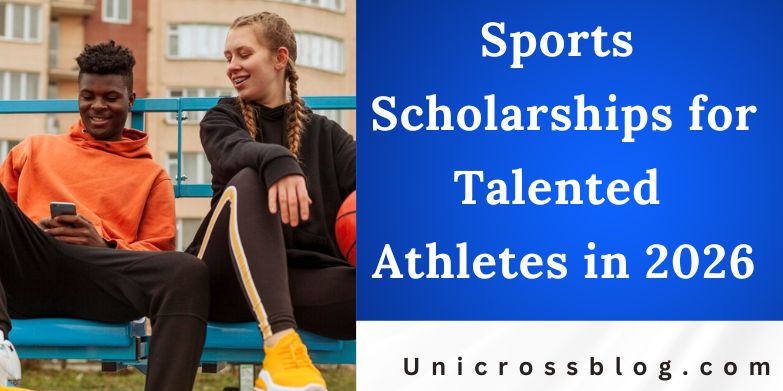Imagine lacing up your cleats, stepping onto the field or court, and knowing that your passion for sports could pave the way to a college degree without crippling debt. For talented athletes, sports scholarships represent more than financial aid; they are a gateway to elite education, professional development, and continued competition at the highest levels. As we approach the 2026 academic year, opportunities abound for high school seniors, international prospects, and even those with niche talents like esports. These awards recognize not just athletic prowess but also academic commitment, leadership, and resilience.
In 2026, the landscape of athletic scholarships is evolving rapidly. The National Collegiate Athletic Association (NCAA) has introduced groundbreaking changes effective for the 2025-2026 cycle, eliminating most Division I scholarship limits across sports. This shift allows coaches greater flexibility to distribute funds, potentially benefiting more athletes with partial or full awards. Whether you are a soccer star dreaming of Division I glory, a track enthusiast eyeing NAIA programs, or a gamer ready for esports teams, 2026 offers diverse paths. Scholarships cover tuition, room and board, books, and sometimes stipends, with values ranging from $1,000 to full rides worth over $200,000 annually.

Major Types of Sports Scholarships
Athletic scholarships fall into several categories, tailored to different levels of competition and athlete profiles. Understanding these can help you target the right opportunities.
- NCAA Division I and II Scholarships: These are the most competitive, with the new 2026 rules allowing equivalency scholarships (partial awards split among roster spots) in all sports. Football and basketball often offer the most full rides (up to 85 for football), but sports like volleyball, swimming, and lacrosse now have expanded pools. Expect 200-300 scholarships per program, though only 1-2% of high school athletes secure them. International athletes must meet NCAA eligibility standards, including amateur status and English proficiency.
- NAIA and NJCAA Options: For those seeking less intense recruiting, the National Association of Intercollegiate Athletics (NAIA) provides up to 12 full scholarships per sport, emphasizing holistic development. Junior colleges (NJCAA) offer two-year pathways with scholarships up to full tuition, ideal for athletes needing extra academic prep. These divisions award aid to about 7% of participants, with lower barriers to entry.
- Non-Competitive and Merit-Based Awards: Beyond varsity teams, scholarships honor past participation or leadership. Programs like the BigSun Scholarship reward any athlete with a 500-word essay on sports’ impact, offering $1,000. Others target specific demographics, such as the Ramblers Scholarship for LGBTQ+ athletes or the Team Type 1 award for those with Type 1 diabetes.
- International and Specialized Scholarships: Global talents can access U.S. programs via services like U.S. Sports Scholarships, which have placed over 1,000 athletes since 2008. Emerging fields like esports are booming; Rochester Institute of Technology (RIT) offers 2026 scholarships for competitive gamers, valuing technical skills alongside teamwork. Olympic hopefuls may qualify for U.S. Olympic and Paralympic Committee grants, supporting elite training.
- Sport-Specific Opportunities: Availability varies by discipline. High-profile sports like baseball (up to 11.7 scholarships per D1 team) and softball contrast with niche ones like fencing or rowing, where fewer applicants mean higher odds. Track and field, for instance, distributes 12.6 equivalency awards, favoring sprinters and jumpers.
In 2026, expect increased funding due to NCAA reforms, with total athletic aid exceeding $3 billion annually across U.S. colleges. Women and underrepresented groups benefit from Title IX mandates, ensuring equitable distribution.
How to Apply for Scholarships in 2026
Securing a scholarship requires strategy and persistence. Start 18-24 months in advance, ideally by junior year of high school.
- Build Your Athletic Resume: Create a one-page profile with stats, awards, and contact info. Record 3-5 minute highlight videos showcasing skills in game settings. Platforms like NCSA Sports help connect with over 35,000 coaches.
- Academic Preparation: Most programs require a 2.3-3.5 GPA and standardized tests (ACT/SAT for NCAA). Register with the NCAA Eligibility Center by sophomore year to verify courses and amateurism.
- Recruitment Process: Attend camps, showcases, and ID clinics. Email coaches with your resume and video links; follow up politely. Verbal offers can lead to National Letters of Intent (NLIs) in November 2025 for early signing.
- Application Components: Essays should blend athletic stories with personal growth. Secure recommendations from coaches emphasizing character. Deadlines cluster in fall 2025 for 2026 entry; track them via scholarship databases.
- International Considerations: Non-U.S. athletes need TOEFL/IELTS scores and must navigate F-1 visas. Services like College Scholarships USA assist with evaluations and placements.
Common pitfalls include poor time management or neglecting academics. Balance training with studies to avoid burnout. Financial aid offices can stack athletic awards with need-based grants for maximum coverage.
Tips for Standing Out as a Talented Athlete
Excellence on the field is table stakes; differentiation comes from intangibles. Maintain peak fitness through year-round training, but prioritize injury prevention. Volunteer in community sports to demonstrate leadership. Academically, aim for honors courses and extracurriculars like student government.
Network aggressively: Join organizations like the National Society of High School Scholars (NSHSS) for athlete-specific awards. For esports, build Twitch streams or competitive rankings. Track progress with journals, adjusting based on coach feedback.
Financially, explore stacking options; a partial athletic scholarship plus merit aid can mimic a full ride. Seek mentorship from alumni athletes. In 2026, with flexible NCAA rules, versatility (e.g., multi-sport athletes) will shine.
READ ALSO: Top 10 STEM Scholarships for International Students in 2026
FAQs
QWhat is the difference between full-ride and partial scholarships?
Full-ride scholarships cover tuition, fees, room, board, and often books, typically in headcount sports like football. Partial (equivalency) awards split the total pot among more athletes, common post-2026 NCAA changes. Both can be renewed yearly based on performance.
Can international athletes get U.S. sports scholarships in 2026?
Yes, over 30 countries send athletes annually. Meet NCAA amateur rules, provide translated transcripts, and apply early. Services like U.S. Sports Scholarships handle placements in soccer, rugby, and more.
Do I need to be a star high school player to qualify?
Not always. While elite talent helps in D1, NAIA and club sports value dedication. About 6% of high school athletes play in college, with scholarships going to diverse skill levels.
How has the NCAA changed scholarships for 2026?
Limits are mostly gone, allowing flexible distribution. This could increase aid for women’s sports and partial awards, benefiting 500,000+ student-athletes.
Are there scholarships for non-traditional sports like esports?
Absolutely. RIT and over 200 colleges offer 2026 esports aid, up to $20,000, for games like Counter-Strike. Focus on rankings and team contributions.
What if my GPA is below 3.0?
Many programs accept 2.3 minimums, especially NJCAA. Improve via summer courses and highlight upward trends in applications.
Can I lose a scholarship mid-year?
Yes, for academic failure, conduct issues, or injury. Most are four-year renewable with good standing; appeal processes exist.
What role do essays play in applications?
Crucial for non-athletic awards. Share how sports built resilience or community impact, keeping it authentic and 500 words max.







